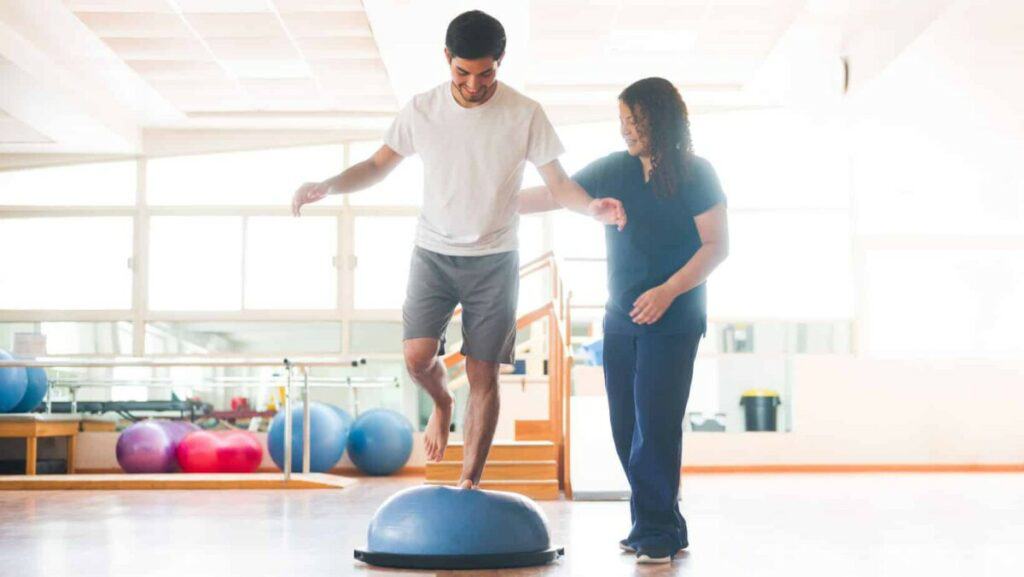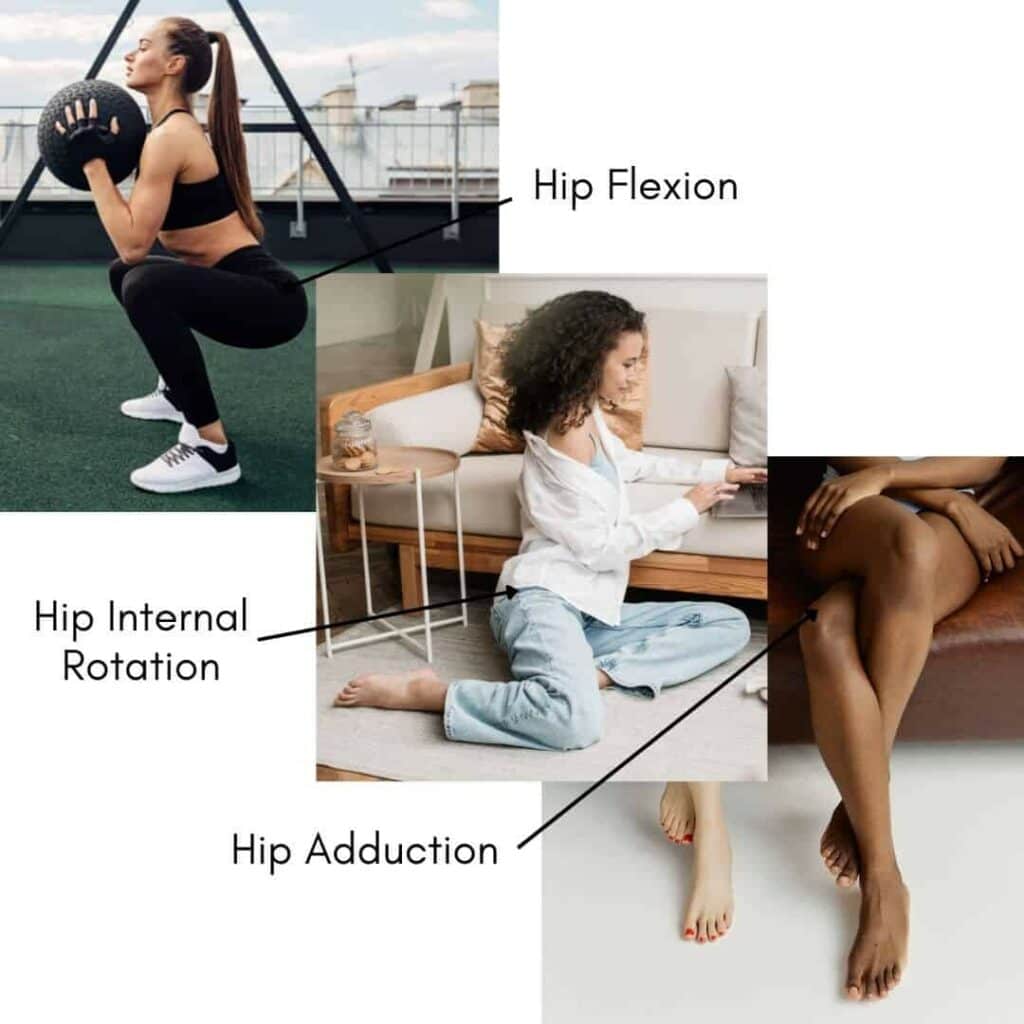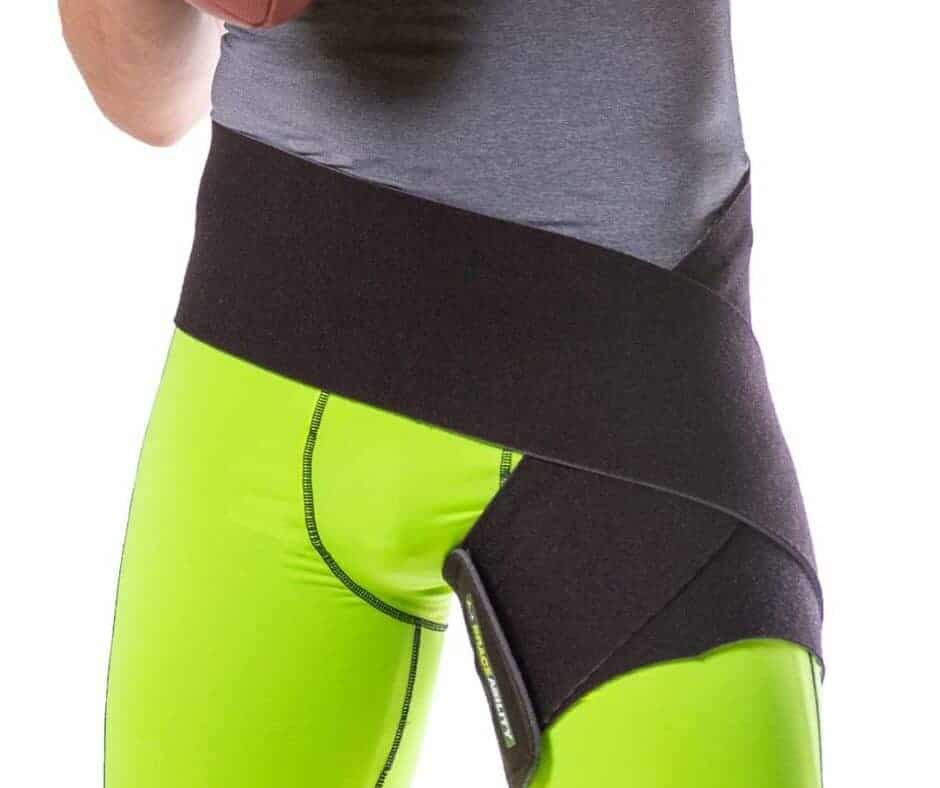Hip Labral Tear Treatment
- Best Asics Shoes for Flat Feet - October 25, 2024
- Best Running Shoes for Flat Feet - October 22, 2024
- Posterior Tibial Tendonitis - October 21, 2024
The hip labrum is a cartilage ring around the socket of the hip joint. Its function is to help the ball and socket of the hip joint to stay connected and stable. A tear to this cartilage can be relatively minor, and symptoms may be able to be managed with activity modification and physical therapy.
In moderate and severe cases, injections and/or surgery may be necessary. You can read more about Hip Labral Tear: Anatomy and Symptoms in our related article. This article will discuss the management and treatment of this condition.
Physical Therapy
Physical therapy treatments can include joint mobility and deep tissue massage, which can improve the range of movement of the hip joint and reduce pain. However, the most important part of physical therapy is the rehabilitation programme.
Physical therapy for hip labral tears can be effective whether surgery is needed. If symptoms are mild in pain, joint stiffness and activity limitations, then physical therapy is the best course to try initially.
An exercise programme should be prescribed following a thorough assessment of your symptoms, mobility and flexibility, strength and areas of weakness. Exercise can help improve hip strength and stability and often significantly reduce pain. You can read more about the best exercises for recovery in our article.
If surgery is indicated, physical therapy is essential for your recovery and gradual return to activities and sports. Often, physical therapy is advised pre-surgery as well to ensure you are as strong and flexible as possible before surgery. This has been shown to improve post-surgery outcomes.

Hip Labral Tear Recovery Without Surgery
Hip labral tear recovery time without surgery is typically about 8-12 weeks. The time will depend on the location and severity of the tear as well as your health, strength and flexibility.
Additional factors such as adherence to advice and rehab exercises, quantity and quality of sleep, nourishment and hydration, and stress levels can also impact recovery time.
Injections and PRP
If physical therapy does not provide adequate pain relief or the exercises are too painful, then injections may be recommended. These come in several forms. The two most common injections used for this condition are:
Corticosteroid Injections
These injections provide pain relief by reducing inflammation. Corticosteroid injections may be advised if physical therapy is restricted due to pain and the tear is assessed as not requiring surgical repair. A window of pain relief can allow the individual to perform rehabilitation that will provide longer-term pain relief.
Platelet Rich Plasma Injections (PRP)
These injections can aid the healing process. PRP injections may be suggested for smaller tears where there may be a capacity for healing, and PRP can enhance this. PRP is made from the individual’s blood, which is spun in a centrifuge at high speed to separate the blood components. The components that aid healing are taken and injected at the injury site.
What To Avoid?
Some hip positions put more stress on the joint. If you have a painful labral tear of your hip, or are recovering from surgery, you may be advised to avoid any or combinations of these positions:
– Hip Flexion. Flexion of the hip is the bending of your hip joint to bring your knee to your chest.
– Hip Adduction. Adduction of the hip is moving your leg inwards and crossing your leg over your midline.
– Hip Internal Rotation. Internal rotation of the hip is the inward movement of your knee and the outward movement of your foot and ankle.

Hip Labral Tear Exercises to Avoid
Activities to avoid are based on the positions mentioned above and on weight bearing and impact. For example, you may be advised to limit your walking or have a period of reduced weight-bearing using crutches. Exercises that cause higher impact through the hip joint, including running and jumping, may need to be stopped entirely to help recovery, whether you have had surgery or not.
Some sports are particularly challenging on the hip. These include high speed, sudden changes of direction, impact and rotation of the hip joint, such as in dance, gymnastics, squash, tennis, soccer, and golf.
Hip Brace for Labral Tear
A labral tear hip brace can work similarly to tape but may offer more structural support. Due to the location of the hip, however, the brace needs to go around the pelvis, and these braces tend to be quite cumbersome. These are not a good option for many individuals, especially more active and high-level athletes.
But for others, it may help provide comfort and support around the joint in the initial period following surgery. This help may be both psychological as well as physical. This is a good example of a hip brace. It is an adjustable strap to ensure a good fit.
James McCormack is a Physical Therapist who specialises in lower limb injuries. www.james-mccormack.com participates in the Amazon Services LLC Associates Program, an affiliate advertising program designed to provide a means for sites to earn advertising fees by advertising and linking to Amazon.com.

KT Tape Hip Labral Tear
Part of the recovery process is managing pain, and while tape may not be a long-term solution, it is a low-risk and low-cost option to offer pain relief. Using KT tape around the hip joint can affect how our skin feels when we move the joint, affecting our proprioception.
Proprioception is the awareness and control of our joint position. This can be impaired after surgery or when we are in pain. Proprioception can change muscle tone and activation and improve movement quality and pain.
KT tape and other tapes can be good options for short-term help, such as managing an athlete through competition or when an individual is initially returning to sport.
Related Article: Hip Pain Diagram
_______________________________________
We are specialists in Physiotherapy, with our clinic in Fulham, South West London.
We offer Online Appointments for £60 and Face-to-Face appointments for £85 in our clinics.
